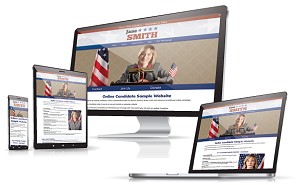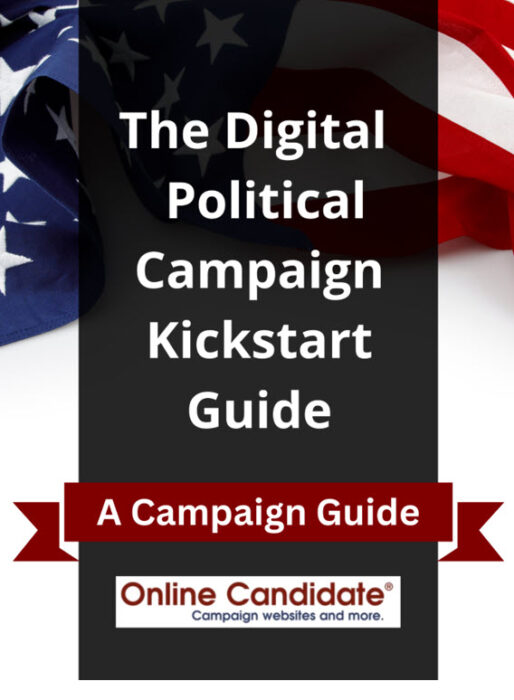In the United States, there are two types of election campaigns: the primary and the general. This article explains their differences and how they affect your digital strategy.
A primary election is an election of one or more candidates of a particular party seeking an elected office. Regular State Primary Elections are held on even years in the month of August. Special primary elections occur when required. The winners of the primary election go on to run in the general election. In some states, only members of a particular political party can vote in a primary. In other cases, only people who live in a certain district may be able to vote. On the other hand, all eligible voters are allowed to participate in general elections.
A general election is where voters of all parties participate, and all voters decide the final winner to hold elected office. This will include the winning candidates from the Republican and Democratic primaries. General elections are typically held in November, though local elections may occur at other times throughout the year.
- What are primary elections?
- How is an open primary different than a closed primary?
- What is the biggest difference between a primary election v general election?
- Primary election strategies for local office
- You’ve won your primary – Now what should you do?
- Boost your online campaigning efforts
- FAQs
What are primary elections?
Primary elections are held by political parties to choose their nominee for the general election. Voters are typically limited to vote only for the primary of their own party. Republican voters can only vote in Republican primaries. Democrats can only vote in Democratic primaries. Another difference is that a primary is only between candidate’s of a single party, while a general election occurs between opponents of different parties. For local campaigns, winning the primary is just the first step; you must then adjust your message for a more diverse general electorate.
The purpose of a primary is for party members to nominate one or more candidates for the general election. If there are multiple candidates from a political party running for office, a primary is a way to narrow the field of candidates. A primary election can also be used as an opportunity to elect political party officers. Primaries serve as a testing ground to gauge which issues resonate with your party’s core supporters.
In the United States, each state has its own rules and regulations governing how a candidate is allowed to run for office.
How is an open primary different than a closed primary?
The difference between an open and a closed primary election comes down to who is allowed to vote. In an open primary, any registered voter can cast their ballot in either party’s primary. In a closed primary, only voters registered with a particular party are allowed to participate in that party’s primary. Eleven states – Delaware, Florida, Kansas, Kentucky, Maine, Maryland, District of Columbia, Nebraska, New Mexico, New York, Pennsylvania, and Wyoming – have closed primaries for Democratic or Republican candidates.
For example, if you live in Texas, which has an open primary system, you can choose to vote in either the Democrat or Republican primary. However, if you reside in New York, which has a closed primary system, you can only vote in the primary of your registered party. Closed primaries often yield a more ideologically uniform electorate, while open primaries may bring in crossover votes that can alter the dynamics of your support base.
There are also semi-closed primaries that allow unaffiliated (independent) voters to participate. Depending on the state, independents either choose the party primary they want to participate in the voting booth or by registering with a party on Election Day. Fourteen states have semi-closed primaries that allow voters to register or change party preference on election day.

There are major differences between a primary and a general election
A primary election is a method of choosing a party’s nominee for an upcoming general election. One difference between a primary versus a general election is that general elections tend to have a higher voter turnout than primaries. This means that while a primary win demonstrates strong support among party loyalists, success in the general election depends on appealing to a broader, more diverse electorate.
In recent national elections in the US, about 60% of the voting eligible population votes during presidential election years. But only about 40% votes during midterms. Turnout tends to be lower during odd years, both for primary and general elections. Turnout variations may be even more pronounced due to community-specific issues and local election schedules.
A general election tends to have a higher voter turnout than a primary.

Primary campaign election strategies
To win office, even local candidates sometimes need to campaign twice: Once in the primary, and again in the general. That’s twice the work for just one election.
Winning a primary election is largely determined by nature of your primary. Your campaign strategy will be influenced by a number of factors. For example, is there an open seat? Are you running against a strong incumbent? Factors include how long the incumbent has been in office, their general popularity and if they have particular weaknesses of which you can take advantage. Local factors such as community issues, historical voting patterns, and district-specific regulations also play a significant role.
What is the nature of your local election laws? For example, in a three or more candidate primary, the rules might make it a ‘winner take all’. The person with the most votes wins, even if it isn’t 50% of the votes. There are municipal races for town or city council where the candidates that garner the most votes win the open seats.
What if you don’t reach a 50 percent threshold?
In other cases, there may be a runoff in which no candidate get 50% + 1 votes. (How will you deal with that possibility?) A primary runoff is a second primary election conducted to determine which of the top vote-getters in the first primary will be awarded the party nomination for office.
- Figure out how many votes you need to win. Once you do that, you’ll need to put together a solid campaign plan. This will encompass your positions, how your staff is arranged and how you will use your volunteers. To increase your chances of winning a primary race, you should build up your primary voter list early.
- You’ll also need to raise money. Most local campaigns are small and do not have a lot of resources. A good chunk of your plan should be how to initially fundraise and expand you donor base.
- Print advertising is expensive. Many local campaigns use the internet to attract and target primary voters. The cost to entry is low. Having a campaign website and creating an active online presence lends legitimacy that you are a serious candidate to primary voters. Use Facebook, Twitter and email as part of your digital strategy.
- Reach out to absentee voters. In many instances, primaries attract a large number of absentee voters. Because absentee voting is popular, candidates who have an an online presence to reach out to voters have an advantage over opponents who do not.
You’ve won your primary – now what should you do?
Candidates work hard to secure a primary victory before they shift their campaigning for the general election. Many times, candidates may delay broader outreach until after securing the nomination. For example, you may be running unopposed in your party. Because of this, you may find little reason to put resources into early voter outreach. You might assume that once you’ve won the primary, the race is effectively over. However, building relationships with the wider community from the start is critical.
General elections tend to have a higher voter turnout than primary elections. Even if a candidate is a shoo-in for a primary win, they still need to motivate those primary voters to show up for the general election – especially those who did not vote for the candidate in the primary. Then it’s a matter of getting enough total votes to win.
Remember, the shift from a partisan primary to a more inclusive general election means you must adapt your message to resonate with a diverse electorate.
Boost your online campaigning for exposure
Digital outreach is a powerful way to influence supporters, raise donation money and motivate voters. If you are not leveraging the web, then you are missing a huge opportunity to engage voters.
These days, we are seeing candidates starting their online campaign efforts more than a year out from Election Day. They might not be actively campaigning, but they are laying a foundation for election season. They are starting social media accounts, registering domain names, building campaign web sites, growing their email list, and preparing to accept online donations.
With a solid campaign strategy in place, it’s essential that your online presence reinforces your message and reaches your target audience.
Starting early is critical to building support. If you wait too long, you may find yourself playing catch-up on the home stretch to Election Day.
Frequently Asked Questions
How can candidates transition their digital strategy from a primary election focus to a general election focus?
Candidates need to adapt their digital strategy when moving from a primary to a general election. The focus shifts from appealing specifically to party members to reaching out the wider electorate. This involves understanding the broader concerns and issues of the race. To win, messaging should be inclusive and address the needs of all voters, not just those of a specific party.
How can candidates leverage voter information to refine their digital strategies?
Analyzing and leveraging voter data is a major part of any digital strategy. Candidates can use data to identify trends or specific voter preferences and concerns. This data is how campaigns can create and leverage targeted communication. For example, social media ads can be customized to address local issues relevant to specific voter groups. Even email campaigns can be segmented and personalized for better engagement and support.
How should candidates adjust their messaging when moving from a primary to a general election campaign?
Second, candidates might also adjust their tone. During a primary, the tone can be more about rallying the base with strong, partisan language. In a general election, the tone often becomes more inclusive and moderate. The goal is to attract undecided voters and perhaps even those from the opposing party who do not support their own party’s candidate. Often a shift involves emphasizing unity, legislative bipartisanship, and a candidate’s willingness to work across the aisle to solve common problems.
Online Candidate provides an easy and affordable way to build your online presence. Learn more about our political website packages and services for marketing your campaign.
« Top Tips for Your Political Email MarketingThe Toughest Job for Any Political Candidate »
Tags: early voting







